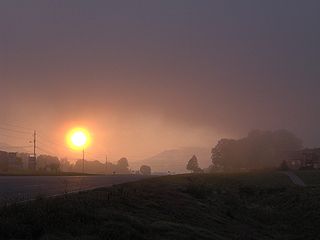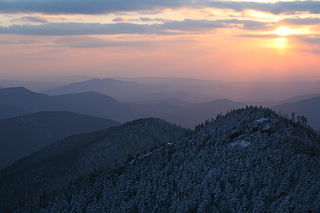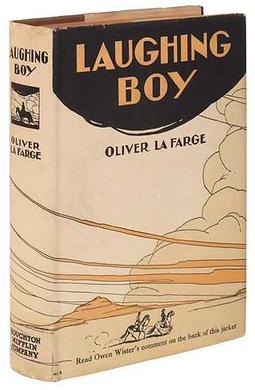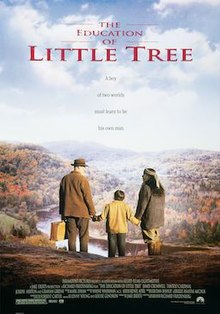Sequoia, Sequoya or Sequoyah may refer to:

Townsend is a city in Blount County, Tennessee. The city was chartered in 1921 by persons who were involved with the Little River Railroad and Lumber Company. The population was 550 at the 2020 census. For thousands of years a site of Native American occupation by varying cultures, Townsend is one of three "gateways" to the Great Smoky Mountains National Park. It has several museums and attractions relating to the natural and human history of the Great Smokies.

Gatlinburg is a mountain resort city in Sevier County, Tennessee. It is located 39 miles (63 km) southeast of Knoxville and had a population of 3,944 at the 2010 Census and a U.S. Census population of 3,577 in 2020. It is a popular vacation resort, as it rests on the border of Great Smoky Mountains National Park along U.S. Route 441, which connects to Cherokee, North Carolina, on the southeast side of the national park. Prior to incorporation, the town was known as White Oak Flats, or simply White Oak.
Joseph Ashton is an American former child actor, who was best known for his role as Oswald "Otto" Rocket in Nickelodeon's animated series Rocket Power.

The Great Smoky Mountains are a mountain range rising along the Tennessee–North Carolina border in the southeastern United States. They are a subrange of the Appalachian Mountains and form part of the Blue Ridge Physiographic Province. The range is sometimes called the Smoky Mountains, and the name is commonly shortened to the Smokies. The Smokies are best known as the home of the Great Smoky Mountains National Park, which protects most of the range. The park was established in 1934 and, with over 11 million visits per year, is the most visited national park in the United States.

Asa Earl Carter was a 1950s segregationist political activist, Ku Klux Klan organizer, and later Western novelist. He co-wrote George Wallace's well-known pro-segregation line of 1963, "Segregation now, segregation tomorrow, segregation forever", and ran in the Democratic primary for governor of Alabama on a white supremacist ticket. Years later, under the alias of supposedly Cherokee writer Forrest Carter, he wrote The Rebel Outlaw: Josey Wales (1972), a Western novel that led to a 1976 film featuring Clint Eastwood that was adopted into the National Film Registry, and The Education of Little Tree (1976), a best-selling, award-winning book which was marketed as a memoir but which turned out to be fiction.

Mika Sue Boorem is an American actress and filmmaker. She began her career as a child actress, appearing on television in small guest roles on Touched by an Angel and Ally McBeal, before earning critical acclaim for her performance in The Education of Little Tree (1997). After being cast in supporting roles in Jack Frost and Mighty Joe Young, Boorem had a lead role in the drama Hearts in Atlantis (2001), opposite Anton Yelchin and Anthony Hopkins, which garnered her further critical acclaim.
"The Sweet Trinity", also known as "The Golden Vanity" or "The Golden Willow Tree", is an English folk song or sea shanty, listed as Child Ballad 286. The first surviving version, about 1635, was "Sir Walter Raleigh Sailing In The Lowlands ".

The Education of Little Tree is a memoir-style novel written by Asa Earl Carter under the pseudonym Forrest Carter. First published in 1976 by Delacorte Press, it was initially promoted as an authentic autobiography recounting Forrest Carter's youth experiences with his Cherokee grandparents in the Appalachian mountains. However, the book was proven to be a literary hoax orchestrated by Asa Earl Carter, a KKK member from Alabama heavily involved in segregationist causes before he launched his career as a novelist. Although claimed to be autobiographical originally, it is now believed that it is only based on Carter's fanciful but fraudulent family claims.
Little Lord Fauntleroy, also known as Little Prince Cedie, is a Japanese anime series produced by Nippon Animation in 1988 and was broadcast on the World Masterpiece Theater.

Heidi's Song is a 1982 American animated musical film produced by Hanna-Barbera Productions and based on the 1881 novel Heidi by Johanna Spyri. The film was directed by Robert Taylor from a screenplay by Taylor, Joseph Barbera and Jameson Brewer, and stars Margery Gray as the title character, alongside the voices of Lorne Greene and Sammy Davis Jr. It is one of only four films Hanna-Barbera ever made that did not feature their trademark characters.

Laughing Boy is a 1929 novel by Oliver La Farge about the struggles of the Navajo in Southwestern United States to reconcile their culture with that of the United States. It won the Pulitzer Prize in 1930.
Dreamkeeper is a 2003 film written by John Fusco and directed by Steve Barron. The main plot of the film is the conflict between a Lakota elder and storyteller named Pete Chasing Horse and his Lakota grandson, Shane Chasing Horse.

Cataloochee is a valley in the Great Smoky Mountains of North Carolina, located in the Southeastern United States. Now a recreational and historic area within the Great Smoky Mountains National Park, Cataloochee was once home to a substantial Appalachian community and Cherokee hunting ground.

Chilhowee was a prehistoric and historic Native American site in present-day Blount and Monroe counties in Tennessee, in what were the Southeastern Woodlands. Although now submerged by the Chilhowee Lake impoundment of the Little Tennessee River, the Chilhowee site was home to a substantial 18th-century Overhill Cherokee town. It may have been the site of the older Creek village "Chalahume" visited by Spanish explorer Juan Pardo in 1567. The Cherokee later pushed the Muscogee Creek out of this area.

Chiaha was a Native American chiefdom located in the lower French Broad River valley in modern East Tennessee, in the southeastern United States. They lived in raised structures within boundaries of several stable villages. These overlooked the fields of maize, beans, squash, and tobacco, among other plants which they cultivated. Chiaha was at the northern extreme of the paramount Coosa chiefdom's sphere of influence in the 16th century when the Spanish expeditions of Hernando de Soto and Juan Pardo passed through the area. The Chiaha chiefdom included parts of modern Jefferson and Sevier counties, and may have extended westward into Knox, Blount and Monroe counties.
The 19th Youth in Film Awards ceremony, presented by the Youth in Film Association, honored outstanding youth performers under the age of 21 in the fields of film, television and theatre for the 1996-1997 season, and took place on March 14, 1998, in Hollywood, California.
The 22nd Young Artist Awards ceremony, presented by the Young Artist Association, honored excellence of young performers under the age of 21 in the fields of film and television for the year 2000, and took place on April 1, 2001, at the Sportsmen's Lodge in Studio City, California.
Pocahontas is a Disney media franchise that commenced in 1995 with the theatrical release of Pocahontas. The franchise is based on the real-life early 17th-century indigenous woman, Pocahontas.

Rose of the Rancho is a 1936 American action film directed by Marion Gering and written by Frank Partos, Charles Brackett, Nat Perrin and Arthur Sheekman, adapted from the play of the same name by David Belasco and Richard Walton Tully. The film stars John Boles, Gladys Swarthout, Charles Bickford, Grace Bradley, Willie Howard and Herb Williams. It was released on January 10, 1936, by Paramount Pictures.











